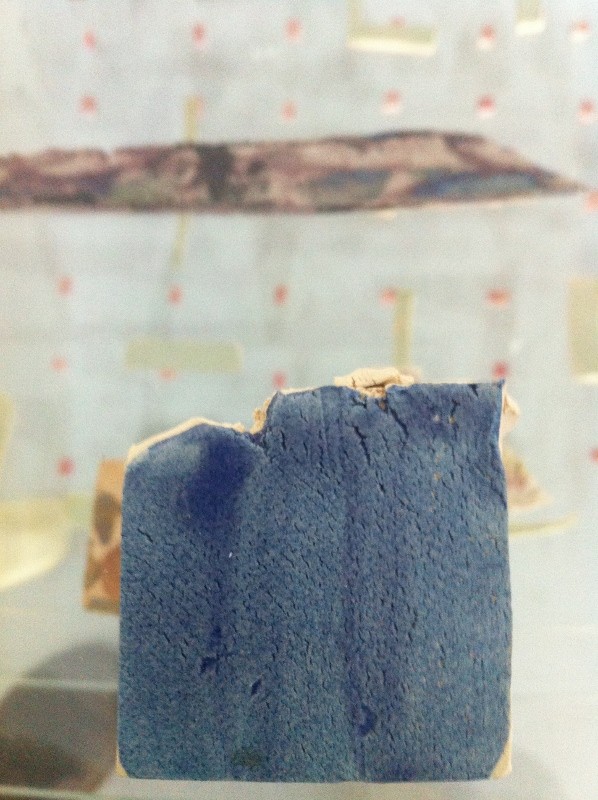Maria Pask/ Frederique Bergholtz
19 Jan - 23 Feb 2013
MARIA PASK/ FREDERIQUE BERGHOLTZ
A Way of Making
19 January – 23 February 2013
A way of making is an exhibition of ceramics by Maria Pask and Frederique Bergholtz. As both makers and curators of this show, they discuss below some of the interests that formulated the exhibition.
“The objects gathered here are first experiments in working with clay – a technique we have both been exploring for the last year.
As an artist and curator respectively, we both have professional practices in the visual arts. We have worked together in these roles in the past. Over the years our professional engagement developed into a friendship, and our conversations began to make us aware of a shared, thus far latent, interest in re-thinking ‘making’.
The wish ‘to do something with ones hands’ is for people in the culture sector a shifting phenomenon; it grazes / or touches on profession, and cannot just be cordoned off as a hobby. Ceramics, a shared interest, announced itself as a terrain that we could enter not solely as beholders, but as actors – to explore the empirical and the visceral in making. The haptic appearance of ceramics, the explicit connotation of craft, and the (seemingly) easy and accessible techniques encouraged us to listen to our feeling that it was necessary to act on this desire to do something and learn something that is within – physical – reach.
We took courses with Iet Kortschot, who has a ceramics studio at the Krom Boomssloot in Amsterdam. We learned how to make pinch pots, how to build up pots, manufacture slabs, and turn on the wheel. We experienced the magic of engobe and glaze. The first sessions were sheer innocence. We claimed ‘time off’ – this other shifting notion in the arts – and enjoyed the private, parallel world of ‘making pots’ that we had entered. Fingers rubbing, piercing, seaming, pinching; hands molding, kneading, caressing, squeezing, pushing; the body putting its weight behind or giving direction and rhythm to rolling, throwing, slapping, cutting; glaze painting, spraying, unprocessed clay baking at different temperatures. The blood streamed in our heads and bodies. It offered solace.
Solace: in terms of both consolation, and perspective. Under our hands we witnessed our growing ability to see our professions in a new way, to imagine them differently – without rejecting or disqualifying what we had. While doing, we accumulated and created data. Data through which and whereby fundamental principles of art – and exhibition making are reintroduced.”
A Way of Making
19 January – 23 February 2013
A way of making is an exhibition of ceramics by Maria Pask and Frederique Bergholtz. As both makers and curators of this show, they discuss below some of the interests that formulated the exhibition.
“The objects gathered here are first experiments in working with clay – a technique we have both been exploring for the last year.
As an artist and curator respectively, we both have professional practices in the visual arts. We have worked together in these roles in the past. Over the years our professional engagement developed into a friendship, and our conversations began to make us aware of a shared, thus far latent, interest in re-thinking ‘making’.
The wish ‘to do something with ones hands’ is for people in the culture sector a shifting phenomenon; it grazes / or touches on profession, and cannot just be cordoned off as a hobby. Ceramics, a shared interest, announced itself as a terrain that we could enter not solely as beholders, but as actors – to explore the empirical and the visceral in making. The haptic appearance of ceramics, the explicit connotation of craft, and the (seemingly) easy and accessible techniques encouraged us to listen to our feeling that it was necessary to act on this desire to do something and learn something that is within – physical – reach.
We took courses with Iet Kortschot, who has a ceramics studio at the Krom Boomssloot in Amsterdam. We learned how to make pinch pots, how to build up pots, manufacture slabs, and turn on the wheel. We experienced the magic of engobe and glaze. The first sessions were sheer innocence. We claimed ‘time off’ – this other shifting notion in the arts – and enjoyed the private, parallel world of ‘making pots’ that we had entered. Fingers rubbing, piercing, seaming, pinching; hands molding, kneading, caressing, squeezing, pushing; the body putting its weight behind or giving direction and rhythm to rolling, throwing, slapping, cutting; glaze painting, spraying, unprocessed clay baking at different temperatures. The blood streamed in our heads and bodies. It offered solace.
Solace: in terms of both consolation, and perspective. Under our hands we witnessed our growing ability to see our professions in a new way, to imagine them differently – without rejecting or disqualifying what we had. While doing, we accumulated and created data. Data through which and whereby fundamental principles of art – and exhibition making are reintroduced.”

